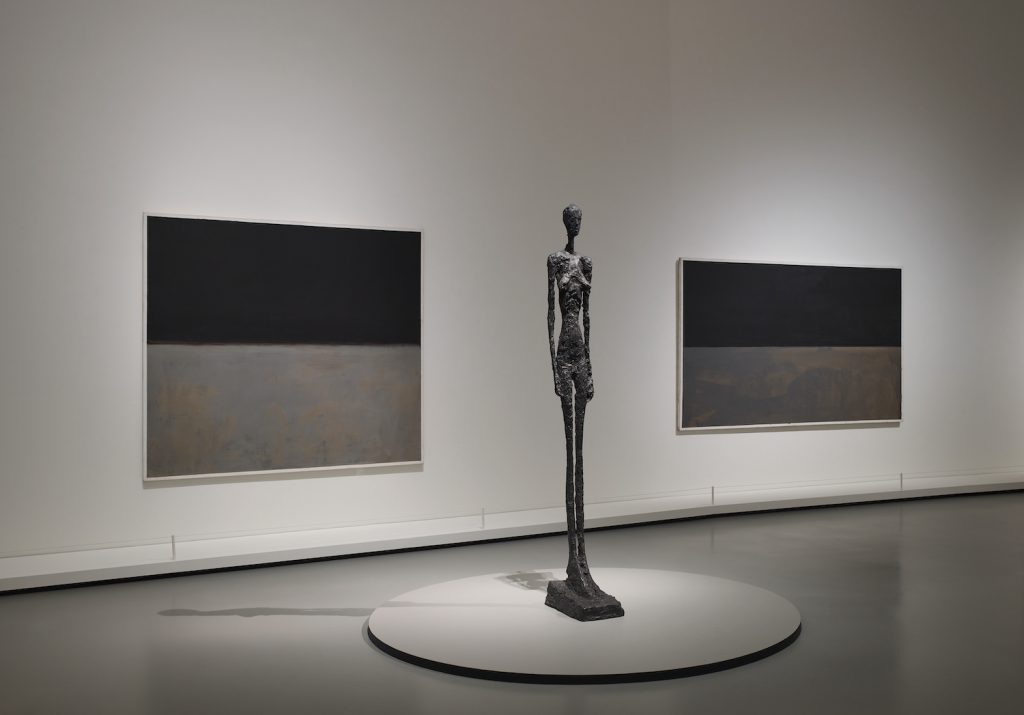Mark Rothko: Fondation Louis Vuitton
The Fondation Louis Vuitton presents the first retrospective in France dedicated to Mark Rothko since the 1999 exhibition at the musée d’Art moderne de la Ville de Paris.
“Mark Rothko” at the Fondation Louis Vuitton is a comprehensive retrospective exhibition that brings together 115 works from major international museums and private collections including the National Gallery of Art in Washington D.C., the Tate in London and the artist’s family. Curated by Suzanne Pagé and Christopher Rothko with François Michaud and Ludovic Delalande, Claudia Buizza, Magdalena Gemra and Cordélia de Brosses, the exhibition follows a chronological timeline, tracing the iconic artist’s career from his early figurative paintings, to the surrealist paintings influenced by mythology to the powerful abstract works for which he is perhaps most well-known.
Sometimes, when we think of major artists such as Mark Rothko or Andy Warhol, we think of them as instantly emerging on the scene in full bloom of their career, but of course, that is never the case. Mark Rothko (b. Rotkovitch in 1903 in today’s Latvia), emigrated to Portland, Oregon in 1913, joining his father who was working out west. He arrived in New York in the mid-1920s where he began working consistently as an artist, teaching, exhibiting and connecting with like-minded artists including Milton Avery, Max Weber and Adolph Gottlieb, with whom he developed a very close relationship. After a bad review of an exhibition that featured both of their work in 1943, Gottlieb and Rothko together wrote a letter to the New York Times, informing the reviewer, who clearly had no idea of how to view their works, about their existential artistic concerns in their artwork. As Rothko’s son Chris writes in the current exhibition catalog, “For Gottlieb and Rothko, it was the role of the artist to bring these existential questions into direct focus, to redirect us from the trivial and help us confront the real. Thus not only was their work not nothing, it was quite emphatically something, something of the greatest urgency”.
As the war years draw to a close, and Rothko became more engaged with Abstract Expressionism, exhibiting with Betty Parsons Gallery and then Sidney Janis Gallery, his paintings begin diving into abstract imagery with hovering shapes, washy color fields and intense luminosity.
Rothko’s paintings evoke many different reactions and readings: haunting, darkness, energy, confusion, spirituality, sadness… it goes on. What it never seems to do is leave a viewer without some sort of emotional response. “For Rothko, abstract art could draw on an unsuspected dimension in order to express fundamental human emotions. This is the very reason why this exhibition is being held today”, writes Suzanne Pagé. Because of his death by suicide, it becomes tempting to read into the works, and Rothko himself long spoke of the darkness and tragedy that lay within paintings, “I would like to say to those who think of my pictures as serene, whether in friendship or mere observation, that I have imprisoned the most utter violence in every inch of their surface”, but the paintings also generate feelings of contemplation and meditation, as with the Menil Chapel in Houston, Texas or the Seagram Murals from the “Rothko Room” at the Tate, which has been carefully reconstructed in the Fondation Louis Vuitton.
With its insightful catalog and extensive selection of work, “Mark Rothko” at the Fondation Louis Vuitton is a rare opportunity to experience the artist’s relentless investigation about art and life and to better understand his complex life. The work feels as contemporary today as it did 50-years ago.
“Mark Rothko” is on view from October 18, 2023-April 2, 2024.
@fondationlv
















